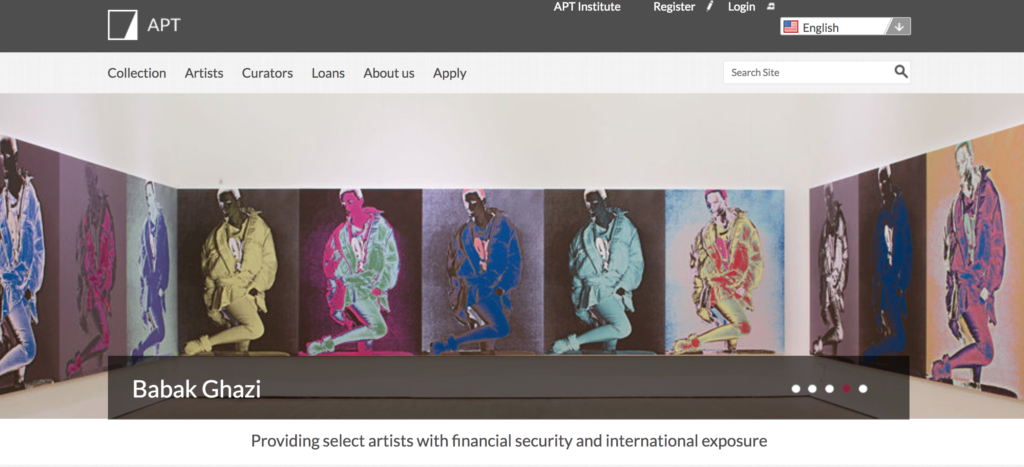Market
Artist Pension Trust Faces Yet Another Crisis as Artists Fume Over New Storage Fees
Some artists are considering pulling out of the arrangement as a result.

Some artists are considering pulling out of the arrangement as a result.

Colin Gleadell

The Artist Pension Trust, a business that pools work by thousands of artists to provide them future financial security, has come under fire for a new monthly fee it will soon begin charging for storage. As a result of the new policy, some artists are considering pulling out of APT altogether—or destroying work they can’t afford to store.
Artists who signed up to participate in APT as long as 14 years ago have taken to Facebook to air their dismay at the new amendment to their contracts, which would lock them into paying $6.50 per month for each work they want to store with the trust after September 1. If they do not want to pay the charge, artists must reply by August 11 and arrange to house the work elsewhere on their own dime.
Since its founding in 2004, APT has amassed approximately 13,000 works by 2,000 artists. It is considered one of the largest collections of contemporary art in the world—and most of that work is in storage. “Do the math,” an artist tipping me off to the new policy wrote in an email. (The artist asked to remain anonymous for fear of a “horrible backlash” by APT.) At most, the new scheme could add nearly $1 million to the Trust’s revenue stream annually.
The Trust is designed so that artists can contribute one work a year for 20 years and then enjoy in the profits made by their contemporaries as the cache of work is sold off over time. But by failing to consult with the artists before announcing the new charge, the Trust is at risk of alienating them further after another debacle in London in April. Eighteen works in the APT collection were pulled from auction at the last minute after artists expressed concern over the potential for public failure.
After the episode, APT changed its policy in an effort, it says, to give artists more control over how their work is sold. For the first time, artists can now choose how their work gets to market: It can be consigned back to their gallery, an institution, or to the artist directly. It can also be managed at the Trust’s discretion.
Backlash to the Plan
Artists quickly gathered on Facebook to discuss the changes, forming a group called “APT Artist Solidarity.” Judging from their posts, some are concerned enough to consider pulling out of APT all together.
“Artists pay for storage?! They already have our work. Why would we pay for storage too?” wrote Los Angeles-based artist, Kristin Calabrese, who started the Facebook group on July 25. Within two days, more than 180 artists had joined. “This is not what we signed up for,” wrote Jesse Bercowetz.
“I originally understood that that APT was developed to protect artists and their futures. It makes me sad that it has become increasingly clear that it is about making a profit,” wrote New York artist Marina Kappos.

The Artist Pension Trust homepage.
Or maybe it’s about avoiding a loss. Kirsten Hassenfeld described the situation as “a breach of trust and a tactic to mitigate financial pressure on APT while transferring the burden to the artists themselves.”
Several artists expressed concern about the cost of shipping work back if they decide to reject the storage proposal. As artist Ashley Hope put it, a previous investments in her future is “suddenly becoming a financial burden.” Another artist, Vlatka Horvat, wondered whether participants could destroy their work if they cannot afford either to ship or store it.
APT’s View
The storage issue is tied up with the Trust’s new approach, which is designed to address artists’ concerns by giving them more control in the selling process. (The Trust holds work for ten years before selling it.) But by potentially putting more of the work in the hands of artists’ dealers, the arrangement may also make APT more dependent on the same gallery system for which it once posed as an alternative.
Al Brenner, CEO of the Mutual Art Group, which includes APT, says the Trust is still a relatively new model and continues to evolve. Now well into its second decade, its focus is to sell and pay artists back: “We don’t want works in storage; we would prefer to get them shown and sell them.”
The storage fee is nominal compared to the real price of storage, he adds, though he was reluctant to offer a specific figure.
“It’s not about raising money to balance our books,” he says of the policy. It is more about encouraging artists “to get the work out of storage so that it can be seen and eventually sold. Some works have been in storage for ten years and that’s not good.”
Brenner feels that “artists have been using the Trust for free storage”—and several artists confirm that storage was indeed one of APT’s selling points. Brenner notes that the original contract did have a clause that required artists to pay storage for outsized works, but it was never enforced.
“We need [artists] and their galleries to work with us to make it work,” says Brenner. “Their choice is either to work with us to consign to their galleries or a third party, or pay the storage fee.“